Catalog of Images on the Walls
Gallery Los Olivos Front Room and Guild Room
by Paul Roark
Gallery Los Olivos Front Room
"Carbon on Canvas" Exhibit
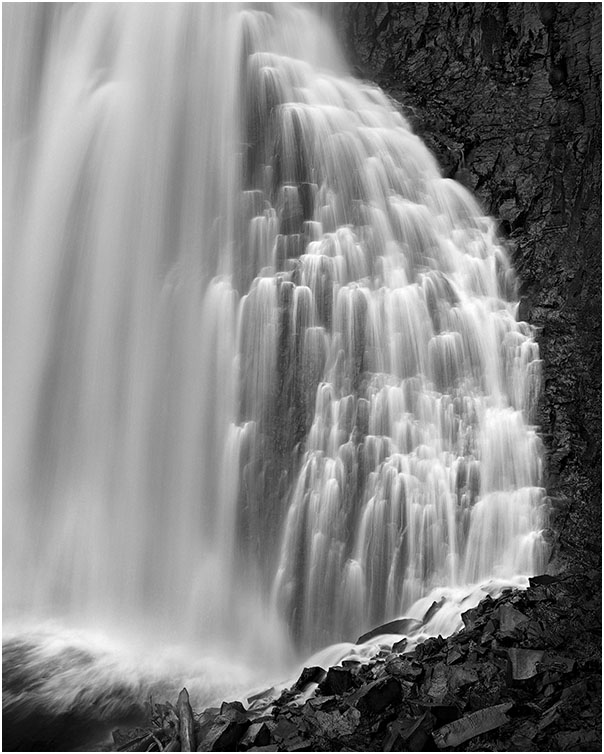
Rainbow Falls is in the Ansel Adams Wilderness just a short
hike from Reds Meadow, which is reached from Mammoth Lakes,
California. Outside of Yosemite Valley, Rainbow Falls is one of
the largest waterfalls in the Sierras.
This shot was taken with a very old Rolleiflex twin-lens-reflex (TLR)
camera that had the f/3.5 Xenotar lens on it.
These old Rolleis are still very capable machines.
That said, after a few outings with this Rollei,
I was sufficiently impressed by the classic design
to invest in a "newer" Rollei TLR, model GX, which has a build-in,
behind-the-lens light meter and also has the
famous Zeiss f/2.8 Planar lens. The upgrade was well worth
the investment. The Rollei medium-format TLR cameras,
like the 35mm Leicas,
earned their place in photographic
history for some very good reasons.
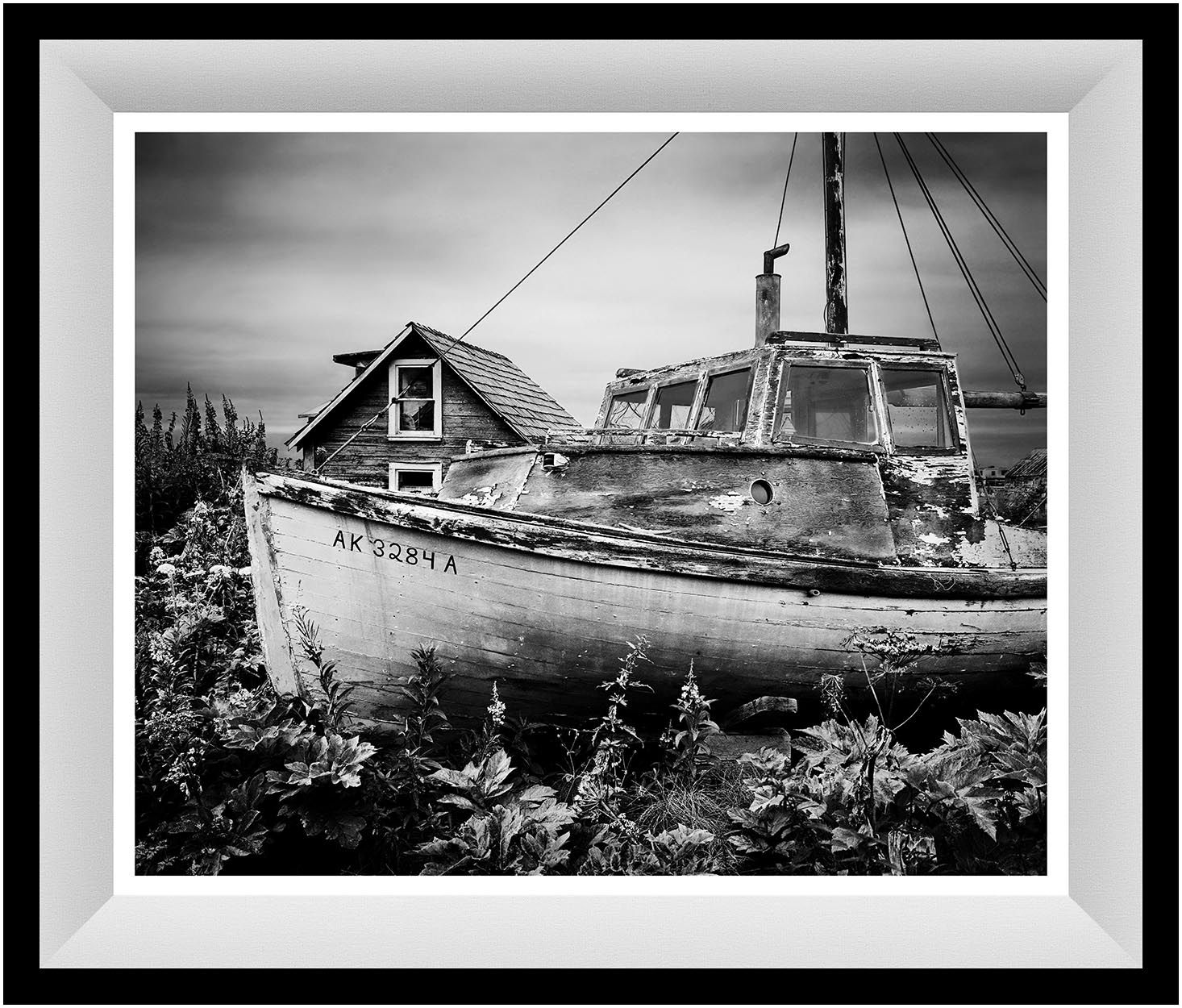
Fishing Boat, Ninilchik, Alaska
This 2001 photo of the old fishing boat in Ninilchik, Alaska, was taken on a
visit to Alaska to see some of my favorite places identified from an ealier
trip 32 years prior.
In 1969 I spent the summer working the Anchorage, AK. A summer in Alaska is a
very beautiful and interesting experience for a life-long Californian. One of
the places I recalled as particularly picturesque was the little fishing village
of Ninilchik, on the Kenai Peninsula.
Ninilchik (from the Athabaskan word meaning "lodge is built place") was a
Dena'ina Athabaskan lodging area used for hunting and fishing.
The first people who would permanently stay in the village were,
apparently, Russian traders. A Russian Orthodox church stands on
a hill just above where this shot was taken.
Fortunately, my return to Ninilchik after a 32 year absence was not a dissapointment.
While the village had changed, it was still picturesque.
However, what shocked me on this return trip to Alaska was the extent to whick
the glaciers had receded over that 32 year period. Climate change in the northern
regions is way more dramatic than what we see in the rest of the U.S.
This image was recorded on Kodak medium format B&W film called "T400CN."
This B&W film used color negative technology to give a finer (or more difuse)
grain structure. In its day, it was what some considered the state of the art for
"high speed" ISO 400 film if fine grain was the goal.
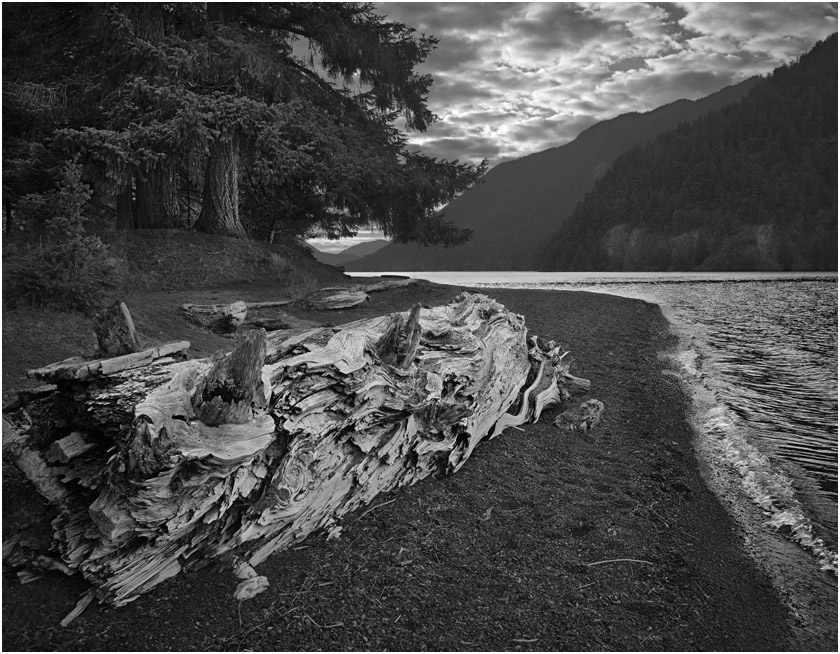
Shoreline, Crescent Lake, Olympic National Park
One of the places I have enjoyed returning to for many years is the
Olymic Peninsula. Crescent Lake Lodge is highly recommended.
Walking up and down the shoreline offers many good views.
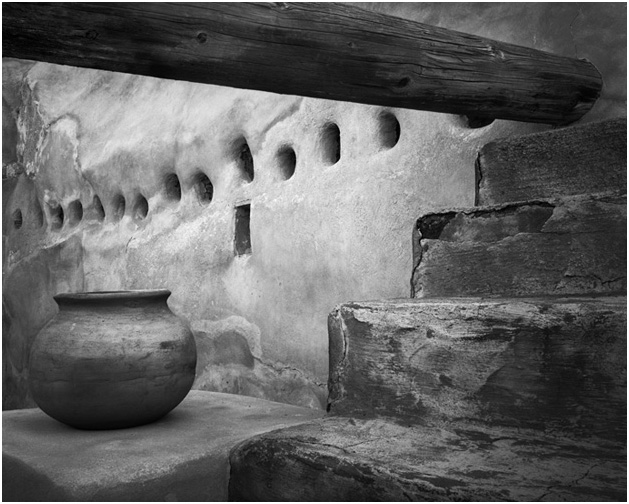
The Granary, Tumacácori, AZ
Tumacacori National Historical Park is located 45 miles south of Tucson, Arizona.
As an aside, both sides of my family migrated through Tucson on their way to California.
In fact, my father lived for a while in a house that was locate on land that is now
part of the University of Arizona at Tucson, which is the site of the famous
(among photographers) Center for Creative Photography.
The US Southwest is a region rich in history and artistic subject matter
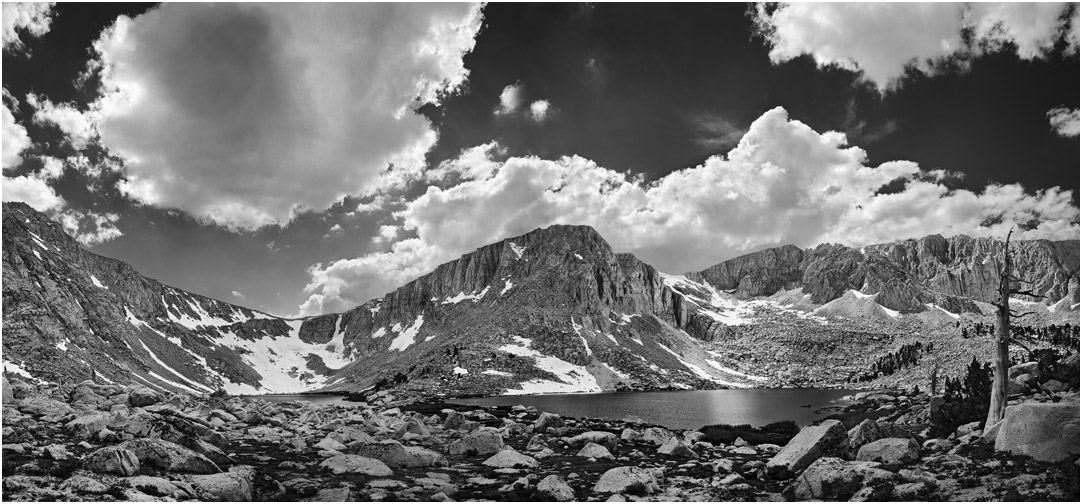
Lakes 4 & 5, Cottonwood Lakes Basin
At slightly over 11,000 feet in elevation, Lakes 4 and 5 are the largest in the
Cottonwood Lakes Basin. The basin is an easy day hike out of Golden Trout Camp.
Old Army Pass is on the left, just above the barely visible Lake 4. Often dangerously
covered with snow, Old Army Pass is the shortest route to 14,000 ft. Mt. Langley.
The stream at the outlet of Lake 4 is one of the best places to see large Golden Trout.
California Fish and Game staff use traps in that spot to catch the fish for collecting
eggs and other purposes.
Just to the right of the Foxtail Pine snag on the right (and not shown in this picture)
is an amazing campsite and shelter. A wind-blown, dwarf conifer covers an area between
two large boulders. Campers have erected a "doorway" into this sheltered space that makes
it look particularly inviting. With a lamp hanging from the "ceiling" of the shelter,
we spent a very pleasant evening in this nice, backcountry "living room."
This panoramic image of the basin holding Lakes 4 and 5 is manually stitched from
many medium format Technical Pan negatives, making a file that is about 20,000 pixels wide.
In addition to using multiple frames to make panoramas that are wider than normal
cameras can take, I also merge frames that were focused at different points.
This focus stacking allows depth of field that is beyond what a single frame can capture.
The net result is very high image sharpness and detail across the entire, sometimes
very large print.
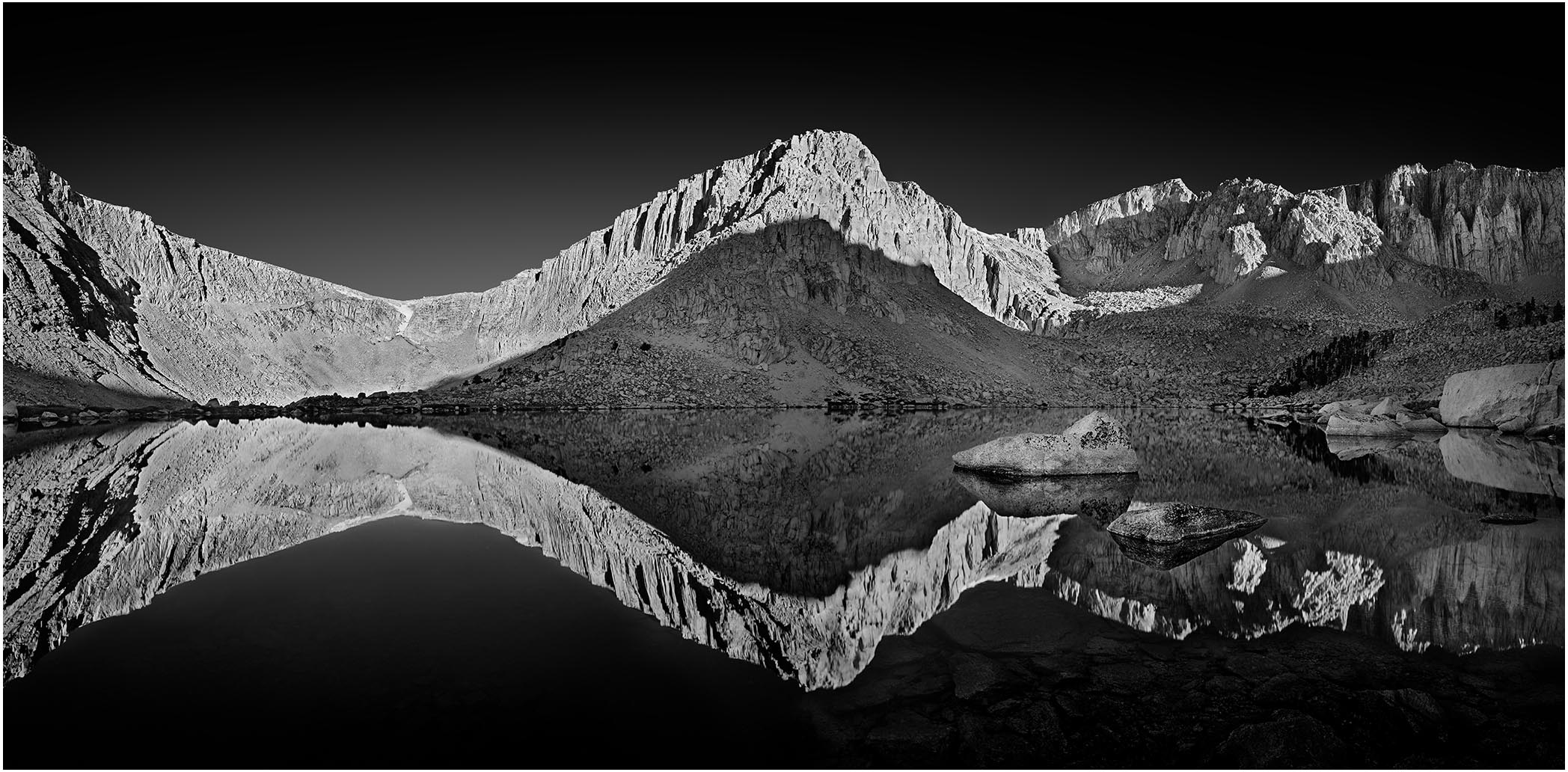
Sunrise, Lake 5, Cottonwood Lakes Basin, John Muir Wilderness
At sunrise in the High Sierra the lakes are often mirror smooth. It doesn't last
for very long, so camping at the lakes is an important part of a High Sierra
experience.
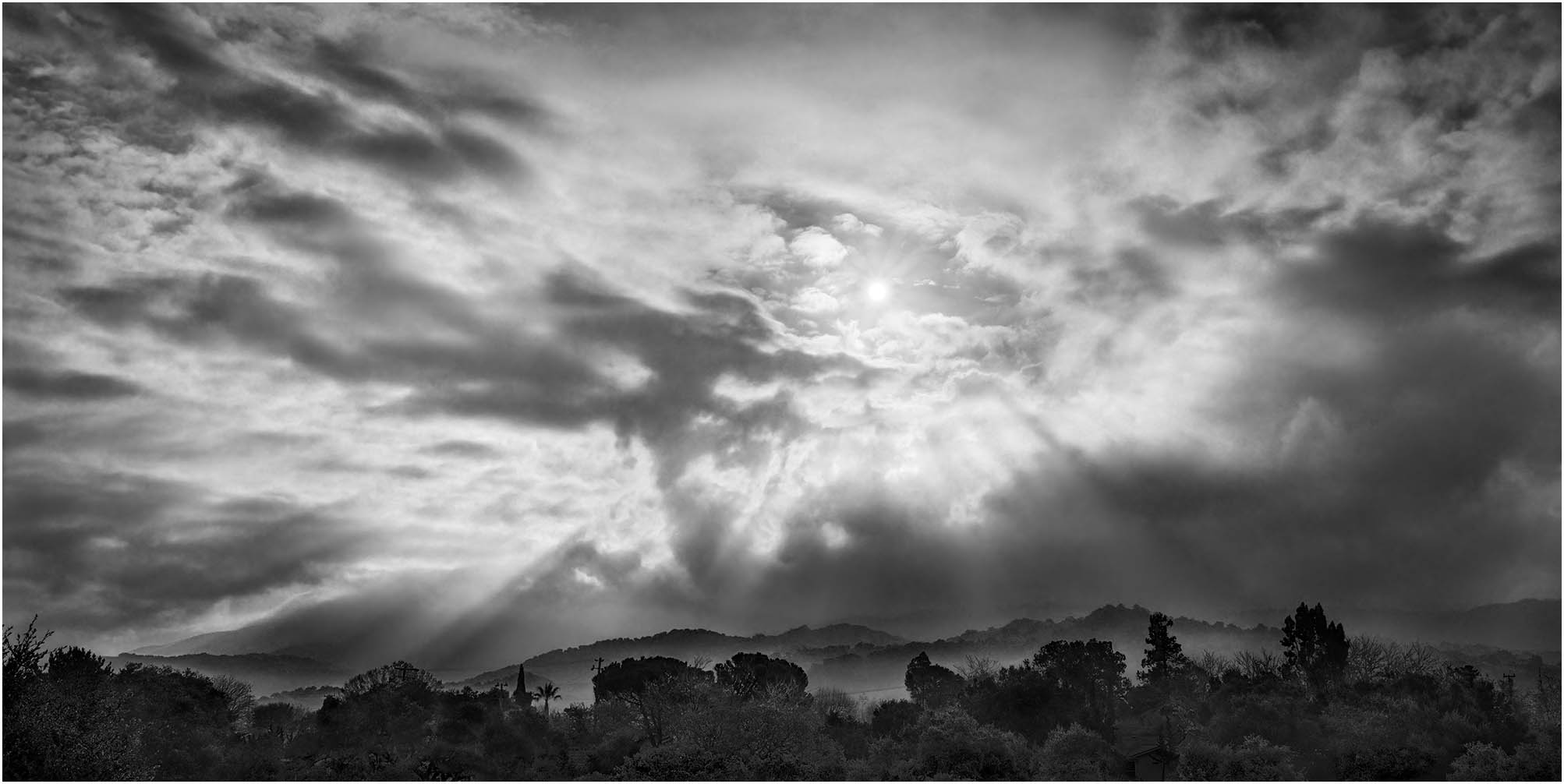
Sunburst, Santa Ynez Valley
One of the reasons to live in a place like the Santa Ynez Valley is the
frequently beautiful skies.

Santa Ynez Valley Oaks
Another reason to live in a place like the Santa Ynez Valley is the ample supply
of interesting old Valley Oaks.
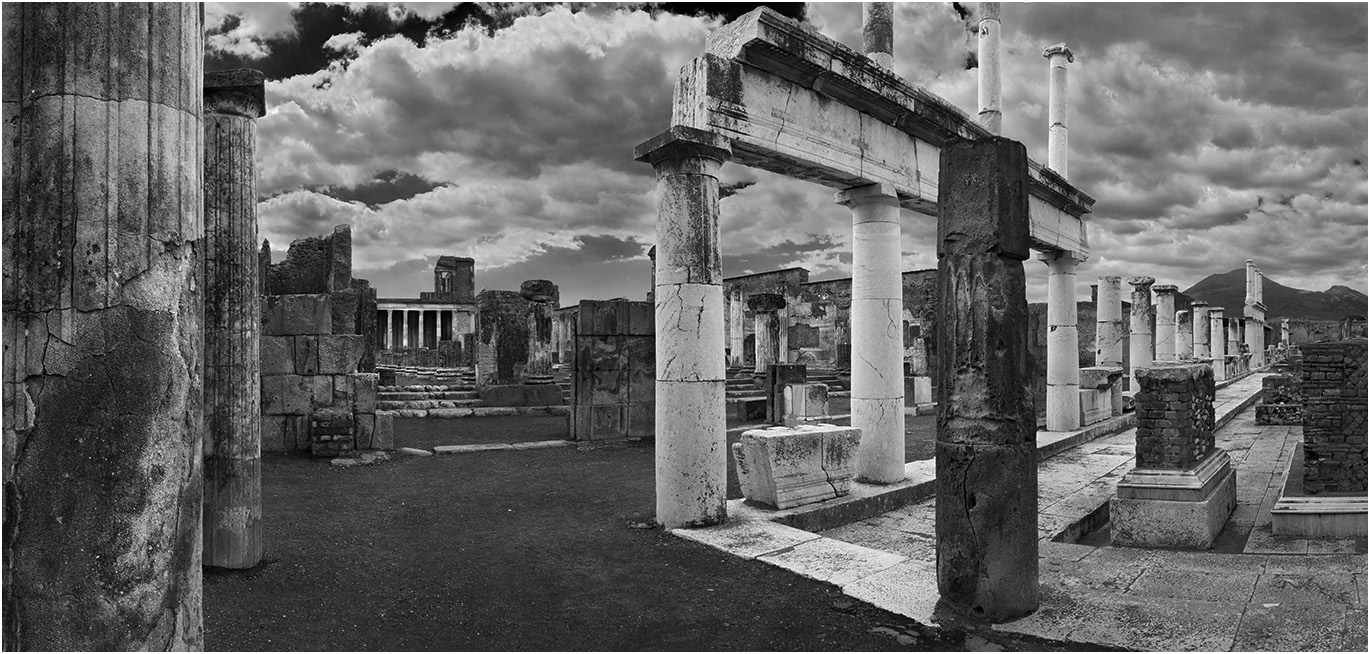
Pompeii, Basilica to Vesuvius
As with many of my panoramas, the images are both "stacked" for depth of field
and stitched for a very wide field of view. If you can get to Pompeii, do so.
If not, enjoy the details of this visual trip back in time.
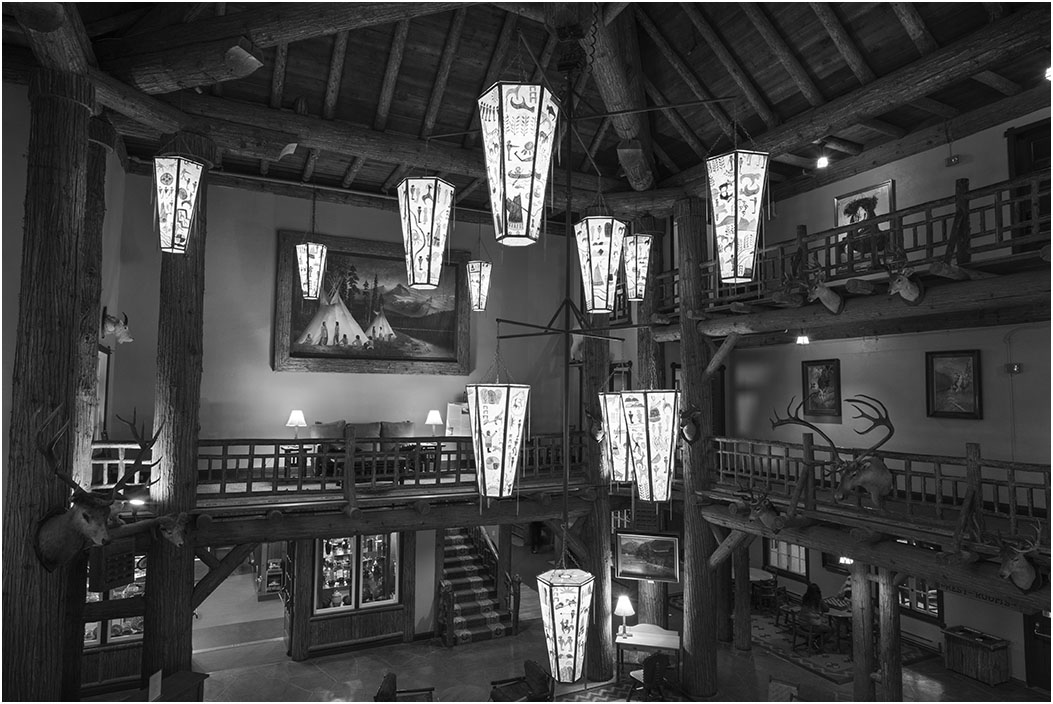
Lobby, McDonald Lake Lodge, Glacier National Park
The lobby of the McDonald Lake Lodge struck me as particularly interesting, and,
of course, the entire setting is very beautiful.
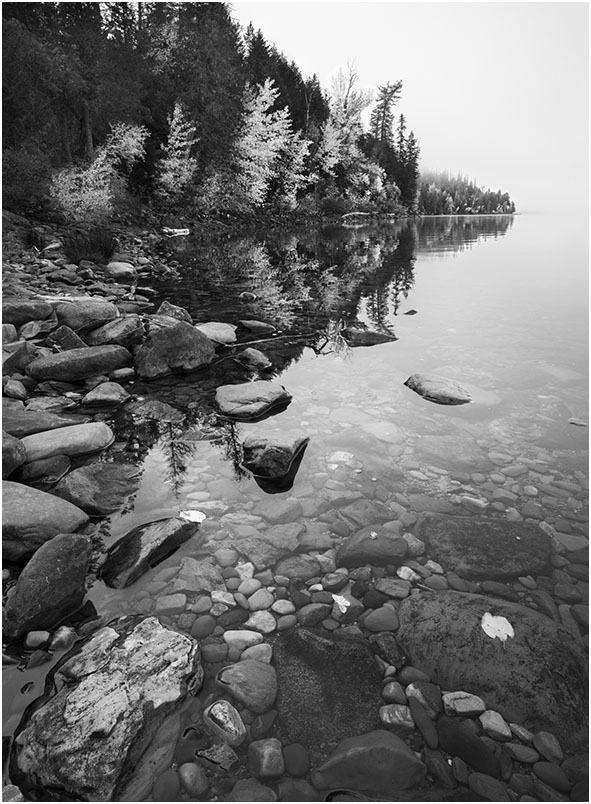
Lifting Fog, McDonald Lake, Glacier National Park
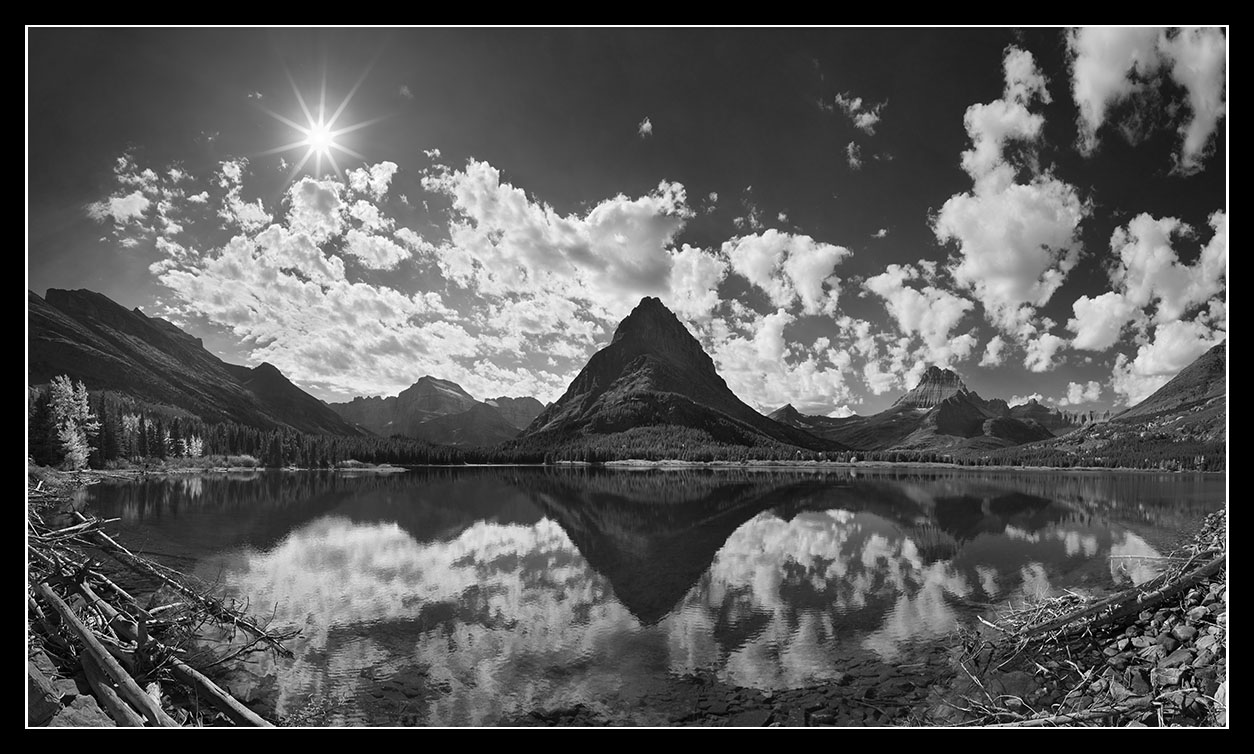
Swiftcurrent Lake, Glacier National Park
With a newly remodeled lodge, this venue looks very promising for further exploration.
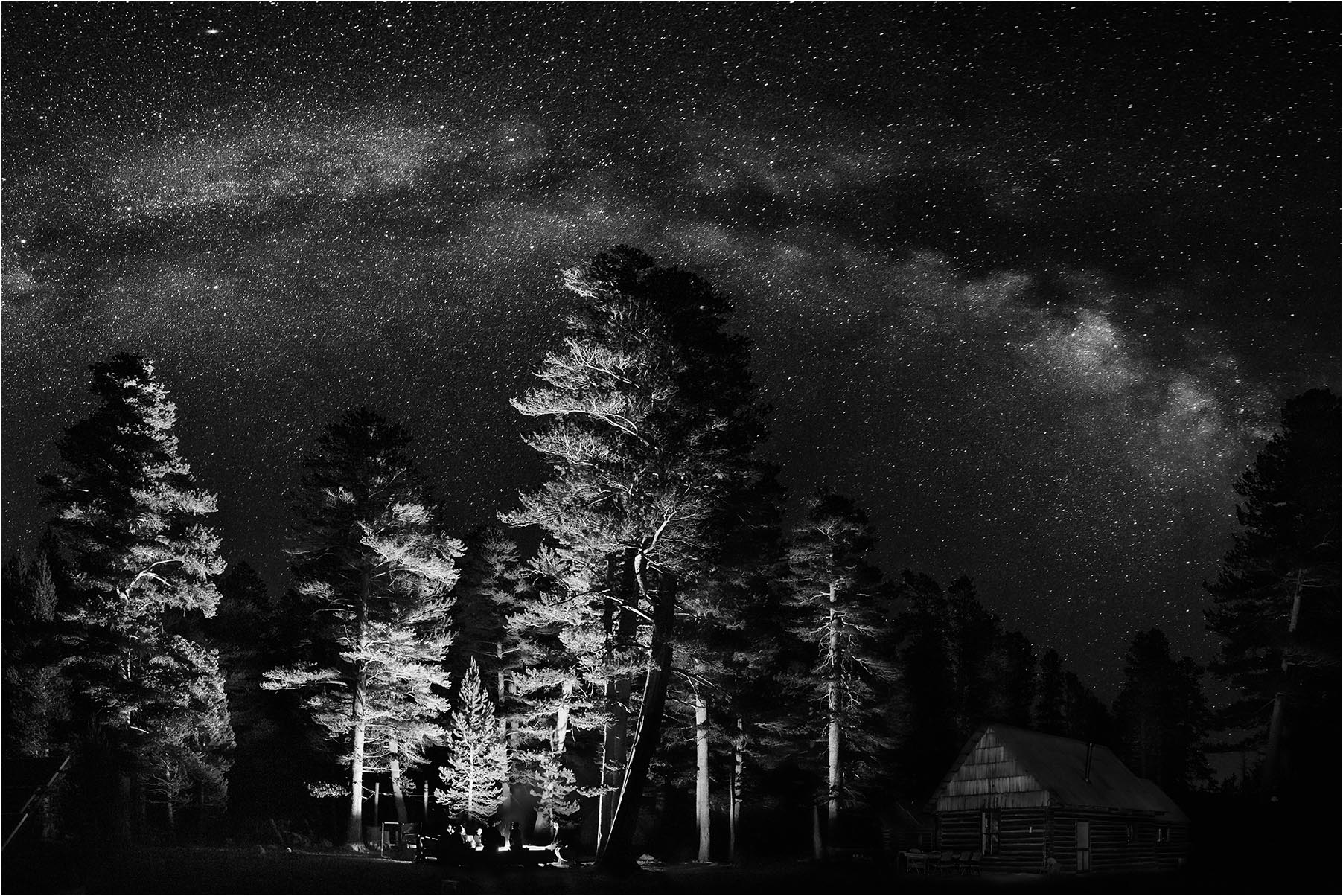
Campfire under the Milky Way, Golden Trout Camp
It's sad that 80% of people have never seen the Milky Way.
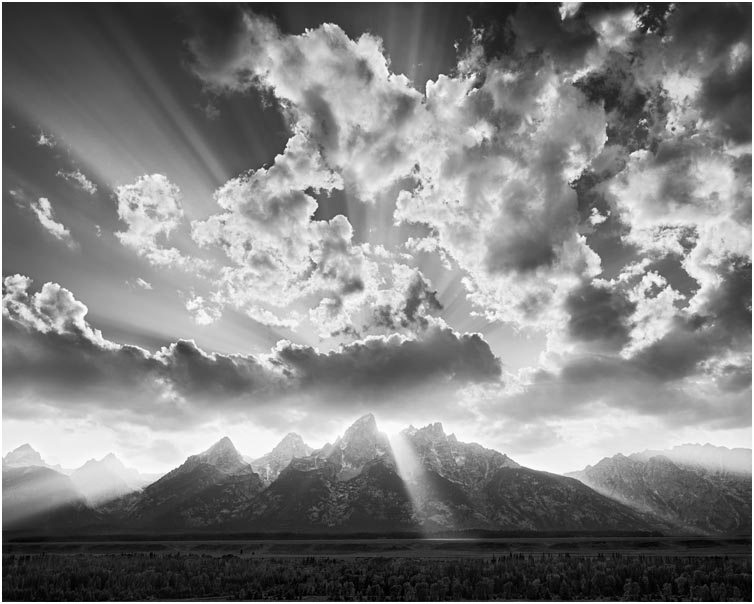
The Grand Teton
The Grand Teton was recorded on medium format Technical Pan film using a Bronica RF 645 camera.
Kodak's Technical Pan film was probably the finest grain film ever made that could be used for
landscape photography. However, it was difficult if not impossible to hold flat in most cameras
and took special processing. I initially mixed my own "POTA" developer until Kodak came out
with a commercial version of it.
I had found a few good viewing locations of the Grand Tetons earlier in the day,
but the light was not that interesting. So, I kept an eye on the light and, as my
family finished dinner in Jackson Hole, I excused myself and drove back to the
spots I thought were the most interesting.
A copy of this image sold at auction at Anderson Ranch Arts Center for $2400.
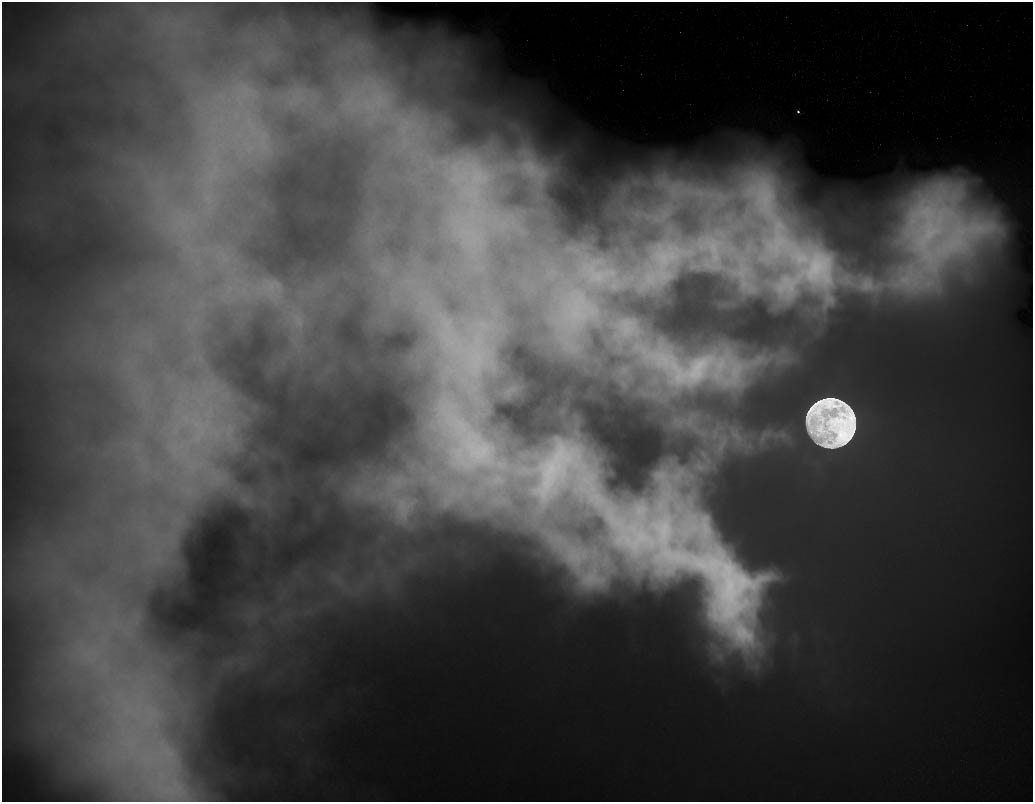
Clouds, Moon(s), Jupiter
(aka, "The Monster that Ate the Moon")
I initially used plural "moons" in the name of this image, but people thought it was a typo.
The reason for the plural moons is that three
moons of Jupiter are clearly visible in the file and for those who look very closely at
the print. As to the "monster," that's a matter of interpretation that doesn't tell people
that the brightest "star" is actually Jupiter. However, because I already know that,
it's "The monster that ate the moon" to me.
Santa Ynez Valley Arts' "Guild Room"
"Carbon on Cotton" Exhibit
Carbon pigments on Arches Hot Press watercolor paper, floating mount and museum glass --
This is the medium that will probably outlast all other photographic prints.
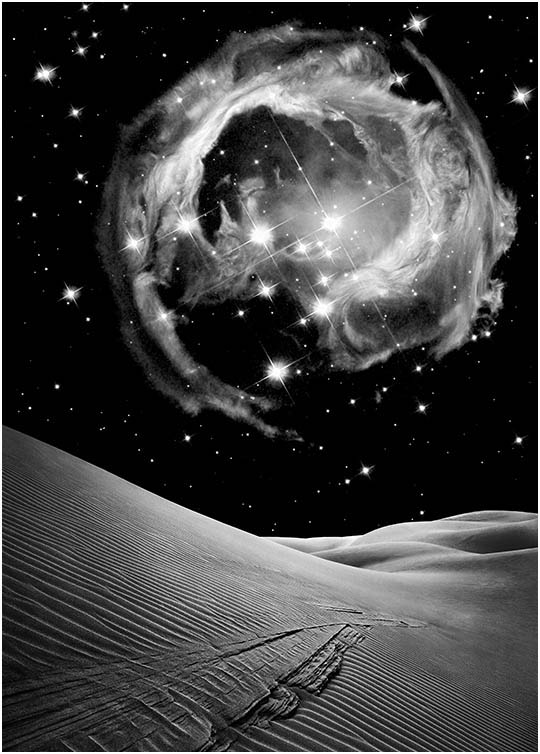
Hubble, Monocerotis, Dunes
This photomontage combines an image of Oceano Dunes taken with my Rollei SL66
with on taken by the Hubble space telescope. It allows us to see two slices of
our universe at very difference scales -- from grains of sand the the expanding
shell of an exploded star. (For more detail, see https://www.paulroark.com/Hubble-Monocerotis-Dunes.html.)
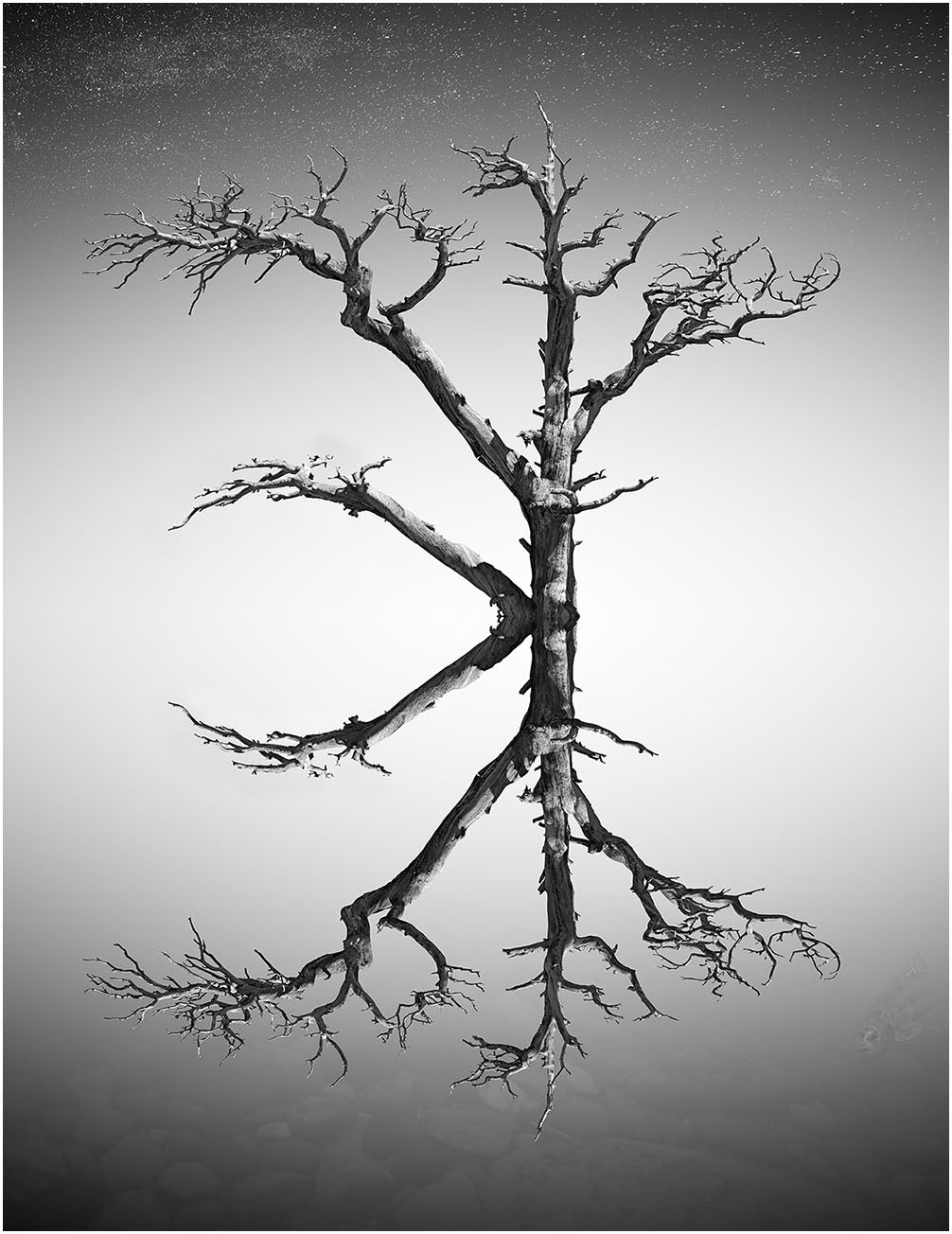
"Foxtail Heaven"
Foxtail pines are very special. In addition to their artistic shapes, they are very long lived
relatives of the Bristlecone pine, the oldest living trees. The Foxtails will live up to 2000 years
and continue to stand for another 2000. This has allowed scientists to make continuous tree ring
corings that go back 4000 years. I suspect we don't yet know what all those samples of the past
hold. There are many of these in the Golden Trout Wilderness and around the Cottonwood
Lakes at the southern end of the John Muir Wilderness. If you look carefully, you'll see a
golden trout in the image. They are another native of the area we regularly explore
during the annual Golden Trout Natural History Workshops that I help to coordinate.
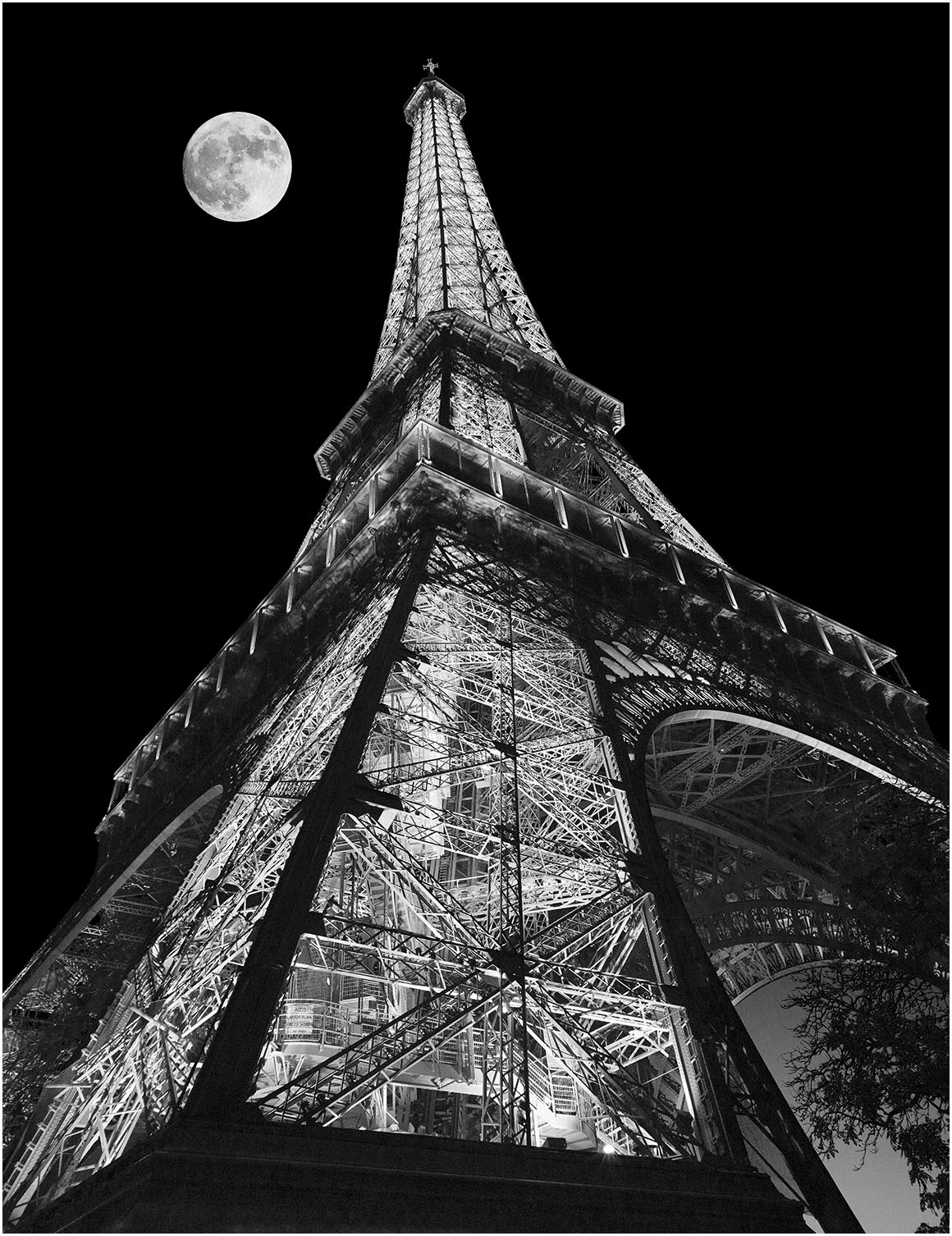
"The Last Super Moon"
This photomontage includes a photo of the most recent super moon as well as, of course,
an image of the Eiffel Tower. In addition to just being a fun image, the joke to me
is that the scales are way different. The Eiffel Tower is very wide angle whereas the moon
was taken with a telephoto. As such, if we ever actually see the moon this large compared to
the Eiffel Tower, the moon is probably going to soon crash into the earth, so it would be
the last super moon for us.
To go to Paul Roark's home page, please click here.
















